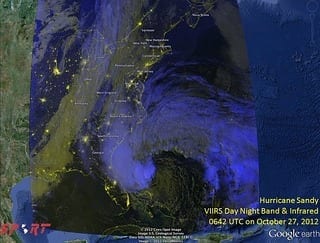
“As soon as microgrids are standardized and easy to integrate into the main grid,” Xu said, “we’ll start seeing them in areas with a high penetration of renewables and high energy prices.”
When Department of Energy and Oak Ridge National Laboratory researcher Yan Xu talks about “islanding,” or isolating, from the grid, she’s discussing a fundamental benefit of microgrids—small systems powered by renewables and energy storage devices. The benefit is that microgrids can disconnect from larger utility grids and continue to provide power locally.
“If the microgrid is always connected to the main grid, what’s the point?” Xu said. “If something goes wrong with the main grid, like a dramatic drop in voltage, for example, you may want to disconnect.”
Microgrids are designed to not only continue power to local units such as neighborhoods, hospitals or industrial parks but also improve energy efficiency and reduce cost when connected to the main grid. Researchers predict an energy future more like a marketplace in which utility customers with access to solar panels, battery packs, plug-in vehicles and other sources of distributed energy can compare energy prices, switch on the best deals and even sell back unused power to utility companies.
However, before interested consumers can plug into their own energy islands, researchers at facilities such as ORNL’s Distributed Energy Control and Communication (DECC) lab need to develop tools for controlling a reliable, safe and efficient microgrid.
To simulate real scenarios where energy would be used on a microgrid, DECC houses a functional microgrid with a total generation capacity of approximately 250 kilowatts (kW) that seamlessly switches on and off the main grid.
This grid includes an energy storage system that generates 25kW of power and uses 50kW•hours of energy built from second-use electric vehicle batteries, a 50kW- and a 13.5 kW-solar system and two smart inverters that serve as the grid interfaces for the distributed energy emulators. Programmable load banks that mimic equipment consuming energy on the grid can provide sudden large load changes and second-by-second energy profiles.
The Latest on: Self-Sustaining Electric Grids
[google_news title=”” keyword=”Self-Sustaining Electric Grids” num_posts=”10″ blurb_length=”0″ show_thumb=”left”]
via Google News
The Latest on: Self-Sustaining Electric Grids
- New bill sets the stage for offshore wind projects in Delaware. Here’s what to know.on April 27, 2024 at 3:03 pm
The 19-page bill outlines the various state departments that would be tasked with negotiating and approving an offshore wind project off of Delaware’s shores or obtaining energy from a project off the ...
- EPA short-circuits the U.S. power gridon April 27, 2024 at 6:55 am
On April 25, the U.S. Environmental Protection Agency (EPA) launched a blitz of regulations targeting the nation’s fossil-fuel power plants. And in the center of the EPA’s crosshairs is America’s coal ...
- Decentralizing the Gridon April 26, 2024 at 1:48 pm
The impetus for change in monopoly electric systems has ebbed and flowed for over three decades. Over the past 15 years the interest in and ability to update electricity system technologies has grown, ...
- Should California’s Supreme Court overturn new rooftop solar rules?on April 26, 2024 at 11:45 am
The state's high court has agreed to hear arguments from environmental groups that oppose the changes the California Public Utilities Commission made to the net energy metering program ...
- Duke Energy’s Annual Impact Report Shares Progress Toward a Cleaner Tomorrow That Includes Affordability and Reliabilityon April 26, 2024 at 8:05 am
Duke Energy (NYSE: DUK) released its 2023 Impact Report, its 18th annual accounting of its progress toward its sustainable business goals.
- The Myths And Truths About Why Electric Cars Don't Have Solar Panelson April 25, 2024 at 7:00 am
Although solar energy alone cannot fully power a car for real-world usage, manufacturers are overcoming challenges and getting closer by the hour.
- Advanced Batteries and Sustainability - IDTechEx Experts Discuss Battery Technologieson April 23, 2024 at 4:02 am
Battery innovation underpins many sectors, including electric vehicles, sustainability, and renewable energy. In a recent episode of their technology podcast ' Tomorrow's Tech with IDTechEx ', ...
- Powering Up: Inside Ottawa’s plan to build the clean power grids of the futureon April 23, 2024 at 2:15 am
Clean electricity is the backbone of the energy transition, but building the power grids needed will be a monumental task. Natural Resources and Energy Minister Jonathan Wilkinson sits down with ...
- Self-Sustaining 'Earthship' Made From Trash Is Truly the Wave of the Futureon April 22, 2024 at 2:20 pm
Earth ships are homes built of natural and recycled materials, such as old rubber tires and straw bales as the bones and insulation of the home structure. Glass bottles are used to naturally filter in ...
- I'm Still Surprised by the Benefits and Struggles of Life Off-Gridon April 20, 2024 at 9:00 am
The pros and cons of taking responsibility for your own energy and water aren't what I expected before making the move to living an off-grid lifestyle.
via Bing News










